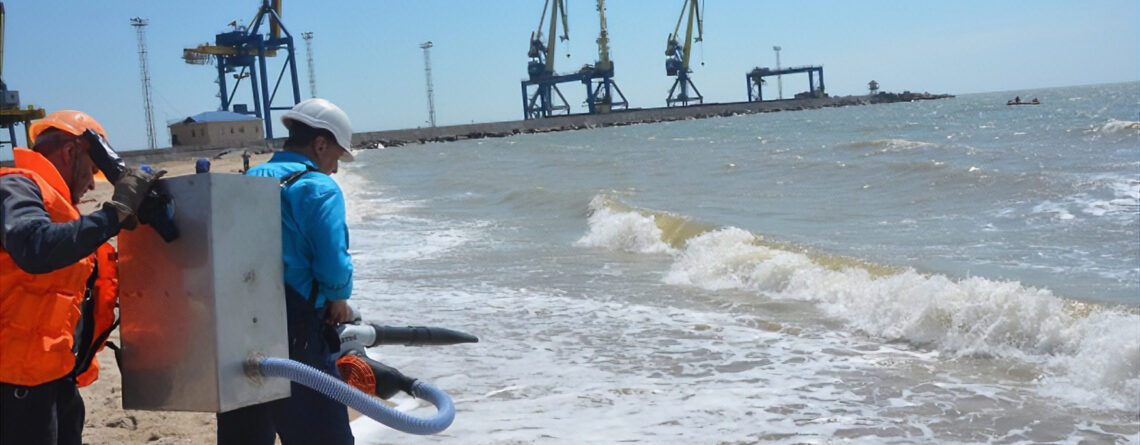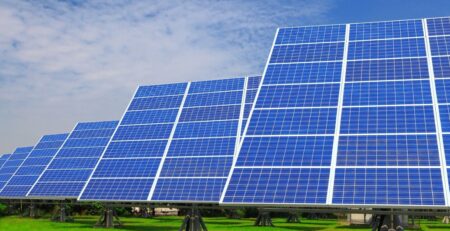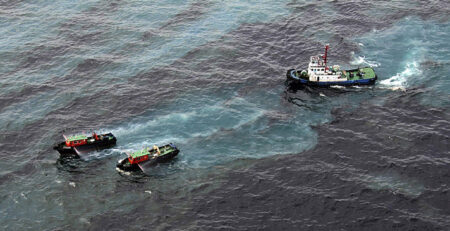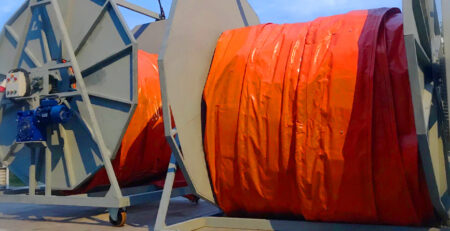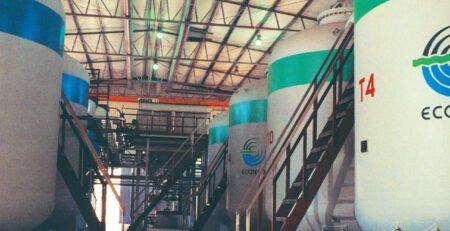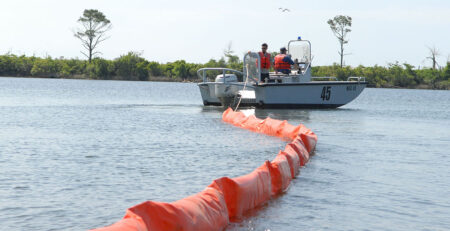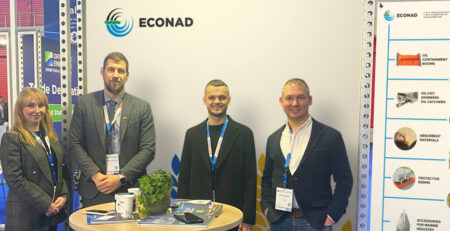Strategy for Active Protection of the Environment from Oil Pollution in the Odessa Region
The geographical location and features of the transport infrastructure of the Odessa region have led to the intensive development of oil transshipment and oil refining enterprises in this region. At the same time, its functioning should be harmonized with the solution of the problems of preserving the unique recreational potential of the northwestern Black Sea region, which requires the development and implementation at the regional and state levels of a set of environmental measures that are adequate in scale to the degree of anthropogenic impact on natural ecosystems.
In the last decade, the research teams of the region – Odessa National University. I.I. Mechnikov, the Ukrainian Center for Marine Ecology, the Southern Research and Design Institute of the Marine Fleet, the Odessa branch of the Institute of Biology of the Southern Seas of the National Academy of Sciences of Ukraine, NPP “Econad”, the Center for Marine Research and Ecological Safety of Terminals of the National Academy of Sciences of Ukraine, a significant amount of information has been accumulated in the field of monitoring oil pollution and protection of the marine environment, fundamentally new technologies for cleaning oily wastewater and recultivating oil-contaminated soils have been developed and implemented (1-5), a concept has been developed for creating a multi-purpose ecological stationary complex “Ekoport” (6).
An important component of the measures is the strategy of active protection of the environment from oil pollution, which is being implemented in the Odessa region, which is based on monitoring the natural environment and sources of its pollution, prevention and application of effective methods for eliminating oil pollution of the air basin, soil and water environment through the use of modern biotechnologies.
Currently, the largest oil transshipment complex in the country operates in the Odessa region with a cargo turnover exceeding 3 million tons per year, which includes the oil harbor of the Odessa Commercial Sea Port, CJSC Sintez Oil, OJSC Eximnefteprodukt, OJSC Odesnefteprodukt, Prydniprovsky oil trunk pipelines of OAO “Ukrtransneft”.
An increase in the volume of oil transportation in the coming years will be achieved through the commissioning of the Pivdenny oil terminal in the port of Yuzhny with a design capacity of 40 million tons per year, which is capable of receiving tankers with a deadweight of 80 thousand tons. Since 1998, a reconstructed cleaning station has been operating ballast water of the Odessa Commercial Sea Port with a processing capacity of up to 100 thousand m3 of oily ship water per day. Despite the implementation of environmental measures, the operation of these enterprises leads to pollution of the natural environment with oil products.
Among the potential sources of oil pollution are also 8 sea and river ports of the Odessa region (South, Odessa, Ilyichevsk (sea trading port and fishing port), Belgorod-Dnestrovsky, Ust-Danubsky, Izmailsky and Renisky).
To ensure environmental safety in the Odessa region, a multi-level state system for monitoring the environment has been created. State control over compliance with environmental legislation and environmental safety in the coastal strip of land, marine territorial waters, the marine economic zone, the continental shelf of Ukraine and sea estuaries is carried out by the State Inspectorate for the Protection of the Black Sea (7). In 1995, in accordance with the Decree of the Cabinet of Ministers of Ukraine No. 198 dated March 20, 1995, “On the implementation of environmental control at border crossing points”, an environmental control service at the border was established within its structure, whose competence also includes investigating cases of marine pollution. environment from ground objects, sea vessels and other watercraft. Compliance with environmental legislation in the Odessa region, including in the field of environmental protection from pollution, is also controlled by the State Department of Ecology and Natural Resources.
In 2000, a maritime regional rescue and coordination center of the State Search and Rescue Service on Water Bodies of Ukraine of the Ministry of Emergency Situations of Ukraine was established in Odessa. Among the main activities of this center are the coordination and provision of work to eliminate oil spills in the Black Sea. In 2002, the Center conducted oil spill response exercises in the northwestern part of the Black Sea with the involvement of leading experts in the region, including specialists from NPP Econad.
Prevention of possible pollution of the natural environment by oil products is largely achieved by environmental expertise of projects for oil refineries and oil transshipment complexes, which is carried out by the State Inspectorate for the Protection of the Black Sea and the State Department of Ecology and Natural Resources in the Odessa region.
The intensification of navigation in the northwestern part of the Black Sea and the development of the oil transportation complex make the protection of marine ecosystems from oil pollution a priority environmental task for the Odessa region. The problems of protecting the Black Sea from pollution are largely international in nature, therefore their solution is regulated not only by the legislative acts of Ukraine, but also by a number of international conventions and agreements (MARPOL 73/78, “Strategic Action Plan for the Rehabilitation and Protection of the Black Sea”, etc.) .
The background pollution of the northwestern part of the Black Sea with oil products is formed mainly due to the runoff of the Danube, Dniester, Southern Bug and Dnieper, as well as coastal sources, including household, drainage and storm water. Every year, about 137 million m3 of normatively treated and untreated wastewater is discharged into the coastal zones of the sea of the Odessa region, while the share of the latter decreased by 1998 from 55.9 million m3 to 0.2 million m3 (7). Despite the improvement in the quality of purification of household and industrial waters at the SBO “Severnaya” (NP content – 1.63-4.56 mg/dm3) and “South” (NP content – 0.54-2.64 mg/dm3) , together with their effluents, about 6 tons of oil products enter the aquatic environment annually. Significant sources of sea water pollution are also drainage water and storm water, the daily volumes of which only in the area of the beaches of Odessa amount to ~ 54 thousand m3 with the concentration of oil products in various adits from 0.05 to 1.57 mg/dm3 (3) .
Thanks to the efforts of regulatory authorities and the implementation of a set of environmental measures in ports in recent years, a slight decrease in the level of oil products from 2–10 MPC in the late 80s to the MPC level in the late 90s has been recorded in the surface layer of the waters of the Odessa Bay (7).
At the same time, pollution of the northwestern part of the sea with oil products coming from rivers from other regions of Ukraine and foreign countries requires solving this problem at the national level. At the same time, intensive shipping in the north-western part of the Black Sea and an increase in the volume of oil transportation create a potential danger of large accidental oil spills, both in port waters and in open areas of the sea. Over the past 15 years, fairly large-scale oil spills have been repeatedly recorded in the Odessa region, for example, in August 1990 from the Italian tanker Himalaya Secundo.
Most often technological spills of oil products occur in the water area of ports. So, only in July 2003, the State Inspectorate for the Protection of the Black Sea registered 3 such cases – on July 18 and 20, the discharge of oil products from the m/v PANOS (Cyprus) and on July 29 from the m/v CERIGO (Malta). With such spills, it is easier to identify the perpetrators, and the elimination of oil pollution can be carried out in a short time by the port services. Based on the “Rules for cleaning up polluted port waters” (8), all ports have developed their own oil spill response (OSR) plans, including those involving new biotechnological methods.
Booms are used as the main preventive measures and means in the elimination of oil pollution of sea water. The use of booms with the subsequent collection of oil products by oil and waste collectors makes it possible to collect up to 80-90% of spilled oil products in the port waters, but does not ensure complete elimination of pollution. The efficiency of blocking oil pollution can be increased through the use of special sorbent booms that are capable of absorbing oil products. Designs of this type include biosorption booms USVR-1, “Multi-S” (Russia), as well as domestic booms “Econad”, developed by the research and production enterprise “Econad”, which were successfully tested during joint bilateral international command and staff exercises of the Ukrainian-Polish working group on the elimination of extreme pollution of border waters “Mostiska-Strazhava 2002”.
Various polymeric and organic sorbents have found wide application for collecting oil products from the water surface or blocking and sorption when the soil cover is contaminated: Pit-Sorb (Canada), Fin-Sorb (Great Britain), Elkosorb (Finland), Mukat-4″ and “Lesorb” (Belarus), “Sorboil” (Russia). In Ukraine, Zhemchug is produced from sorbents in industrial volumes. All these sorbents have high oil capacity (4–10 g/g) and hydrophobicity.
In recent years, oil sorbents of a new generation have been created that have sorption and destructive activity in relation to a wide range of petroleum products. Thus, for the elimination of oil spills and bioremediation of contaminated soil cover in the Odessa region, on the basis of the Econad Research and Production Enterprise, the Econadin bacterial preparation, a liquid culture of bacteria-destructors of petroleum products, and Econad biosorption booms are produced on an industrial scale. At present, in all major ports of Ukraine, an irreducible stock of the drug “Econadin” has been created.
“Econadin” – brown powder, dispersed, or with fibrous inclusions, buoyant, hydrophobic. The drug is based on bacteria superdestructors of oil hydrocarbons, immobilized by a special technology on an organic substrate – peat. Eco-friendly, non-toxic, odorless. The drug is protected by patents (9, 10, 11). Primary sorption of oil hydrocarbons by the drug is accompanied by biocatalytic transformation with subsequent destruction of oil pollution in natural conditions. The natural oil-oxidizing microflora of the natural environment is not suppressed, but activated. The mechanism of action of the drug in the purification of soil and water is not only in the biochemical destruction of oil and oil products by highly active bacteria, but also in the activation of natural microbial biocenoses by metabolic products.
The use of biotechnologies with the use of the drug “Econadin” in the arsenal of means for rapid response to the elimination of oil pollution of water and soil allows:
- block pollution as soon as possible and prevent its spread;
- eliminate pollution with minimal environmental damage;
provide further prolonged action to restore natural biocenoses with the involvement and stimulation of self-cleaning mechanisms.
Biosorption booms “Econad”, protected by a patent (12), are made in the form of separate sections, from which whips up to 20 – 50 m long are mounted. The following can be used to stuff the boom: “Econadin”; sorbents treated with a suspension of microorganisms-destructors of oil hydrocarbons and other bioresistant pollutants; sorbents treated with nutrients to stimulate the development of native oil-oxidizing microflora; untreated sorbents.
Biosorption booms “Econad” are intended for:
- maintaining the cleanliness of the aquatic environment in places where oil films are likely to appear (for preventive purposes in the areas of oil fields, oil terminals, port berths and shipyards, etc.);
- containment and collection of oil in cases of minor (focal) spills on any surfaces;
- containment and collection of oil in shallow water (the most preferred method);
protection of the shore from oil pollution.
The developed biotechnologies with the use of the indicated means of protection against oil pollution are successfully used at the enterprises of the maritime complex (sea trading ports of Odessa, Yuzhny, Ilyichevsk, etc.), at the enterprises of the oil and gas complex (Pridneprovsky oil trunk pipelines of JSC “Ukrtransneft”, GAO “Main oil pipelines “Druzhba” , JSC “Prikarpattransnefteprodukt”, GPU “Poltavagazdobycha”, GPU “Shebelinkagazprom”, etc.), at the enterprises of the chemical, food industry and energy (Odessa port plant, CJSC “LUKOR” (Kalush)), JSC “Cargill” (Kalush) Donetsk), CJSC “Odessa”, Kremenchug CHPP, etc.).
An important place in the complex of measures for the prevention of oil pollution is the inventory of all objects that are sources of environmental pollution at each enterprise and the development of individual instructions for the collection and disposal of oil products for each of them. This kind of work was carried out by NPP “Ekonad” for the facilities of the port “Yuzhny”.
A certain range of environmental problems is associated with the expansion of the network of oil depots and filling stations in the region. Gasoline spills while refueling vehicles lead to air pollution and accumulation of oil products in the soil around gas stations. In addition, an increase in the volume of road transportation of gasoline and diesel fuel by tankers increases the risk of spills during transportation. For such cases, appropriate PLAS should be developed. The problems of sanitation of the territory and filling stations have already been methodologically solved, however, the technologies developed by NPP Econad are still used only at filling stations in St. Petersburg.
To a large extent, the creation of closed water supply systems with their own treatment facilities at oil refineries and coastal enterprises contributes to a decrease in the level of pollution of the natural environment with oil products (Sintez Oil, ZAO Lukoil refinery, Yuzhny port).
The main directions in the field of reducing the level of environmental pollution in the Odessa region remain:
ensuring effective monitoring of objects – potential sources of environmental pollution;
creation at all facilities of the necessary material and technical
reserves for liquidation of emergency spills of oil products, including an irreducible emergency stock of sorbents, including those with biological activity;
solving the problem of cleaning storm and drainage waters entering the water area of the Odessa Bay;
widespread introduction of modern biotechnologies for water purification and soil bioremediation from oil pollution.
All these areas remain, to one degree or another, relevant for other industrialized regions of Ukraine.

